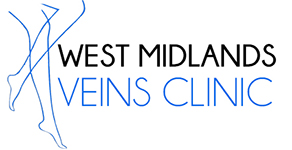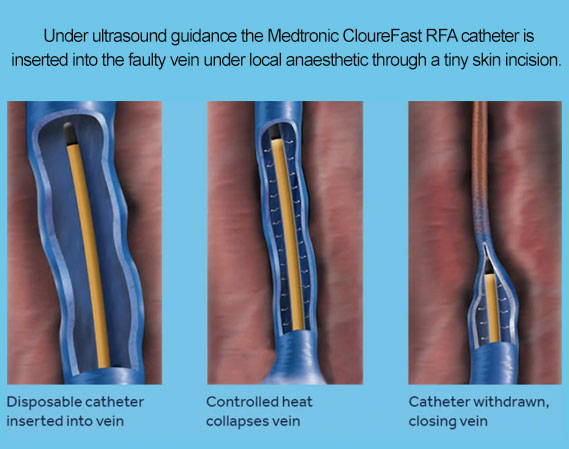Varicose veins treatments.
Seeking treatment for varicose veins is a personal choice. For many, the symptoms are a daily occurrence that affect the quality of life both in and out of work. For some, the complications of varicose veins are a clear indication from treatment and for others they wish to be able to wear that skirt or pair of shorts they no longer feel confident to wear.
Lifestyle modifications such as regular exercise, losing weight, avoiding prolonged standing and wearing support stockings are all be beneficial, but will not prevent the progression of the varicose veins or their symptoms. Treating the underlying causes of the varicose veins is recommended by the National Institute for Health and Care Excellence (NICE) who advise assessment and treatment by a specialist vascular surgeon.
Treatments are also personal and need to be tailored to your needs and wishes. Following a detailed consultation and assessment including an ultrasound of your varicose veins, Jeremy will discuss the causes of your varicose veins and the recommended treatment plan.
For most varicose vein treatments there are two components:
- Firstly, the feeding vein needs to be identified and stopped. These refluxing veins are normally found in common sites either in the groin, thigh or calf and are deeper in the leg meaning that you are unaware of them. Treating these is like turning off the ‘tap’ which is supplying the varicose veins with the high-pressure venous blood. Because the valves within the vein have stopped working effectively it is better for this vein to stop working altogether. Effective treatment results in the blood draining back to the heart through other normally working veins in the leg.
- Secondly, is to manage the varicosities or redundant ‘hose’ left after turning off the tap. These superficial and tortuous veins are mostly cosmetic and can usually be treated as part of the same procedure. Treating them without treating the feeding vein results in a much higher rate of recurrence as the feeding vein hasn’t been stopped.





